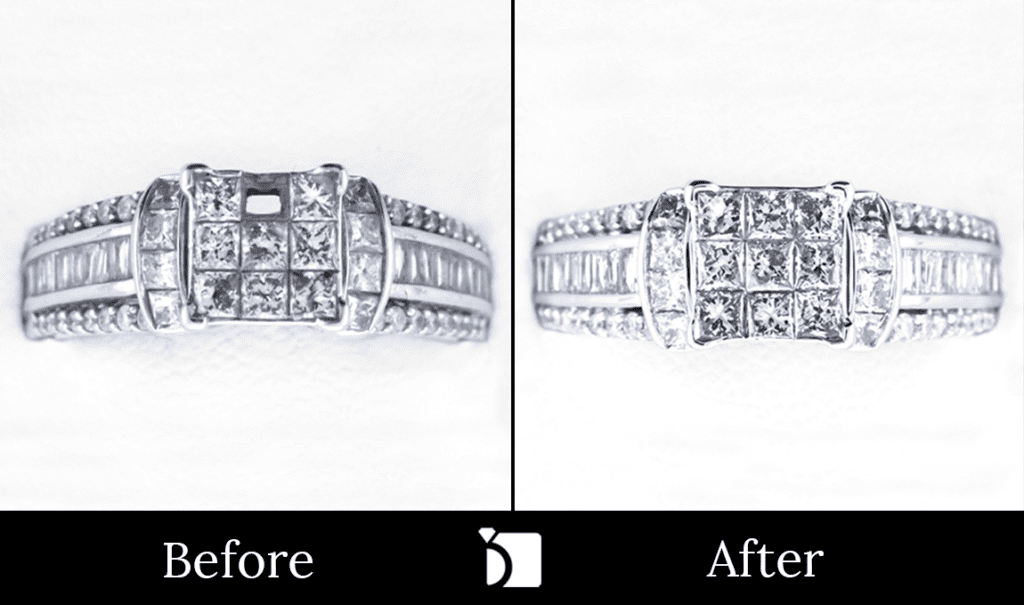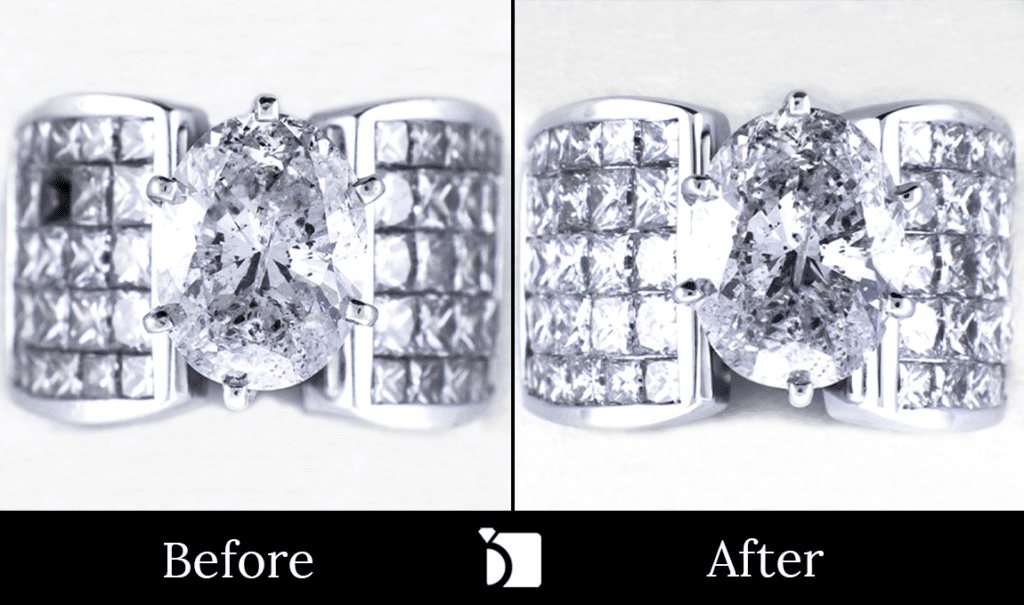
Everything You Need To Know About Diamonds
From their fiery origins deep within the Earth to their timeless place in our most cherished jewelry, diamonds have a story as brilliant as their sparkle—discover what makes them truly extraordinary.

The Ultimate Diamond Guide
The Sparkle and Brilliance of Diamonds
When it comes to diamonds, there’s so much more than meets the eye. Beyond their glittering beauty lies a world of science, craftsmanship, and artistry that defines what makes each gem truly special. This Ultimate Diamond Guide was created to help you understand every facet of the world’s most celebrated gemstone — from how diamonds are formed deep within the Earth to choosing the perfect stone for your jewelry. Whether you’re a collector, a soon-to-be fiancé, or simply captivated by sparkle and brilliance, this guide is your comprehensive source for diamond knowledge.

The Science Behind Diamonds: How They’re Formed
From Formation to Brilliance
Diamonds begin their journey more than 100 miles beneath the Earth’s surface, where pure carbon is subjected to extreme heat and pressure over billions of years. These remarkable conditions transform carbon into crystal structures of unparalleled strength and beauty. Over time, powerful volcanic eruptions carry these crystals upward through kimberlite and lamproite pipes — natural geological channels that serve as elevators from the depths of the Earth to the surface.
What makes diamonds truly extraordinary is their atomic structure. Each carbon atom bonds tightly to four others in a perfect lattice, creating the hardest natural material known to man — a flawless 10 on the Mohs hardness scale. This unique arrangement not only gives diamonds their legendary durability but also their unmatched brilliance, allowing light to refract and reflect in ways that make them shine like no other gemstone on Earth.
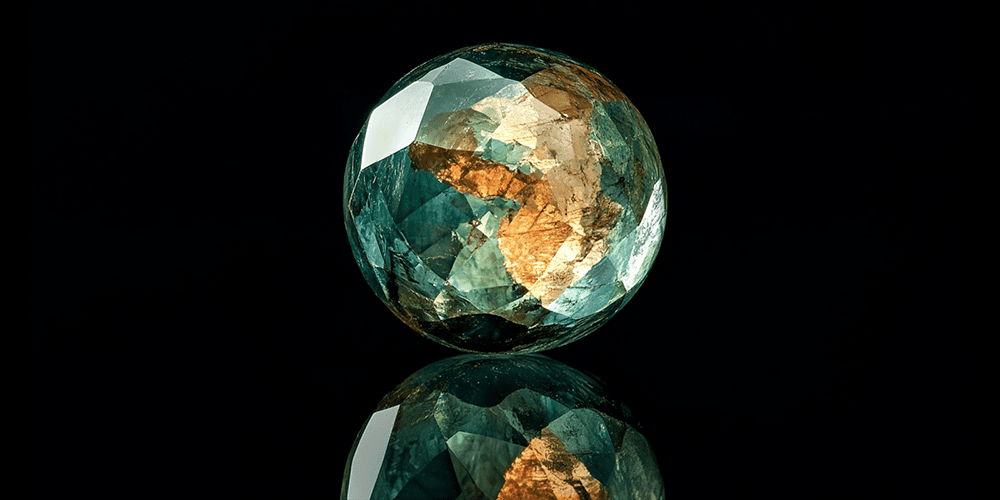
Understanding the Four C’s (and the Fifth C)
Understanding the Anatomy and Worth of a Diamond
Perhaps the most important diamond knowledge to master lies in the Four Cs: Cut, Clarity, Carat, and Color — the global standard for evaluating a diamond’s quality and value.
A Quick Breakdown of the The Four C’s (Cut, Clarity, Carat, and Color)
When discussing the anatomy of a diamond, it is appropriate to begin with the Four C’s.
Each of these measurements, along with various others, are combined to create a value for each diamond that either deems it less or more expensive. It is important to note that cut and carat weight will have the greatest impact on the price evaluation given to a diamond.
Cut
The cut dictates how well a diamond reflects light. The grading scale runs from Excellent to Poor, with an Excellent cut providing maximum sparkle.
Clarity
Clarity refers to the presence of internal inclusions or external blemishes. From Flawless (FL) to Included (I3), higher clarity means fewer imperfections.
Carat
Carat measures the diamond’s weight, not its size. The price of a diamond increases exponentially at each full-carat mark.
Color
Diamond color is graded from D (Colorless) to Z (Light Yellow or Brown). Colorless diamonds are the rarest, while near-colorless stones often offer excellent value.
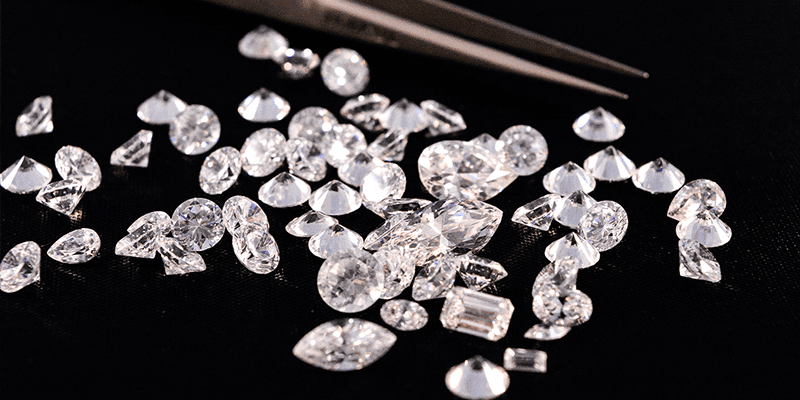
The Cut of a Diamond
Diamond Cut: The Key to Brilliance
The cut of a diamond is more than just its shape — it determines how effectively light enters, reflects, and disperses within the stone, creating its signature sparkle and brilliance. Often considered the most important of the Four Cs, the cut directly influences a diamond’s overall beauty and value.
A Round Brilliant Cut is the most popular and typically the most expensive, featuring 58 precise facets that maximize light reflection and fire. Each shape, however, holds its own unique charm — the elongated Oval gives the illusion of greater size, while the Emerald Cut emphasizes clarity and sophistication.
Diamond cuts are graded by their ability to reflect light and achieve optimal brilliance. This grading scale ranges from:
- Excellent – Maximum sparkle and brilliance
- Very Good – Reflects most light beautifully
- Good – Offers balanced brightness and value
- Fair – Noticeably less reflective
- Poor – Dulls the diamond’s natural brilliance
When selecting your diamond, the cut is where precision meets artistry — and it’s what truly brings your gemstone to life.
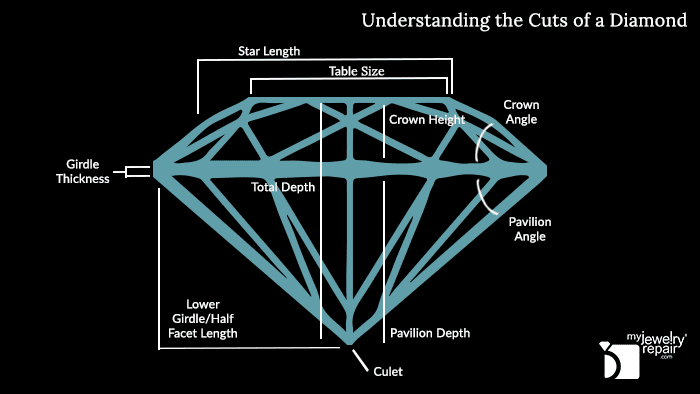
This is the anatomical view of the cut of a diamond and the various aspects that are measured in order to assess the prestige of the cut of the diamond itself.
The girdle should be thin-to-medium thickness, as this measurement is not too bulky, but is also strong enough to withstand daily wear and tear. When it comes to the cutlet, it is more desirable to have a diamond with as small a cutlet as possible.
Each of these measurements impacts the Sparkle and Brilliance of the diamond, thus impacting the value the diamond is given.
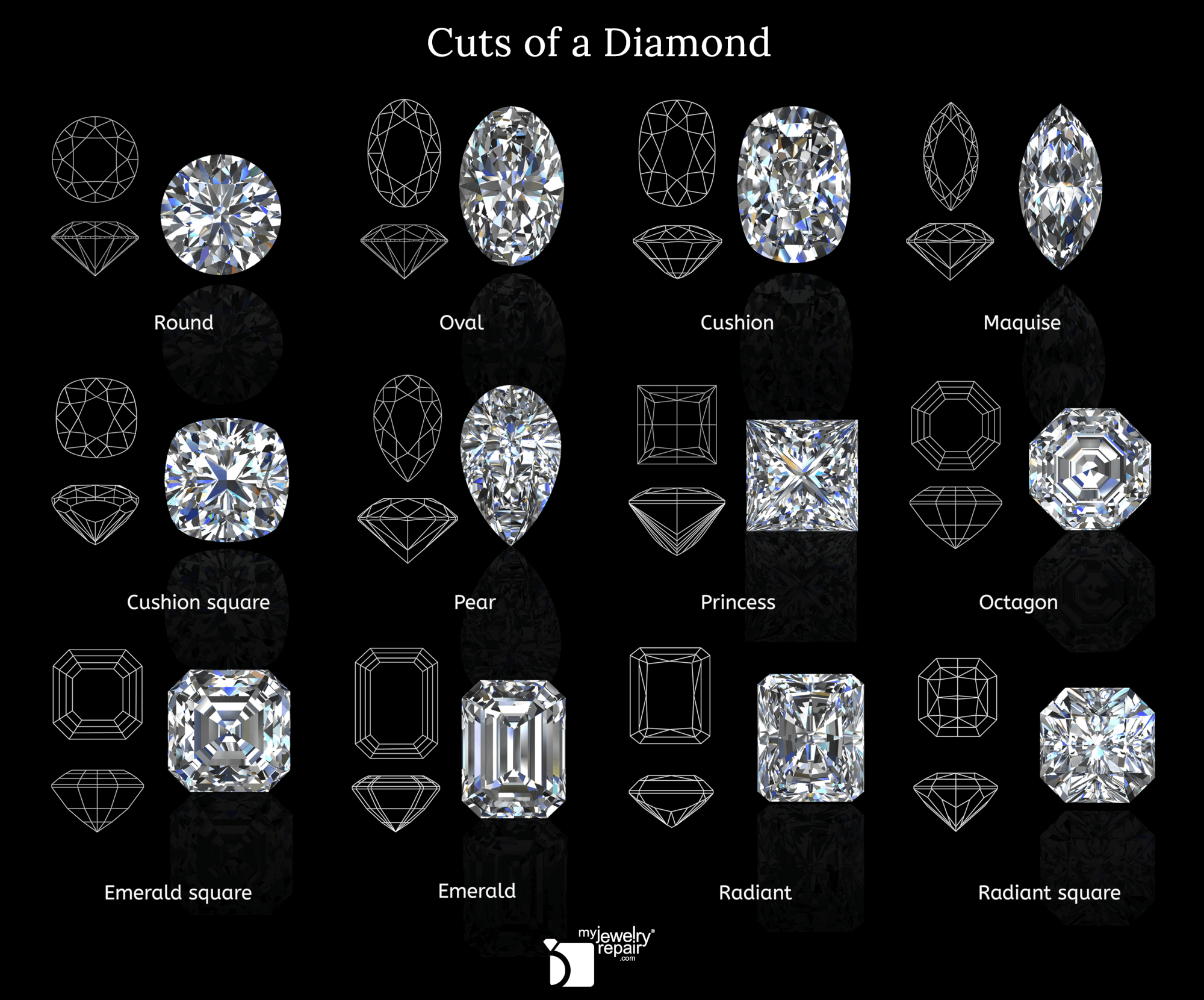
A variety of shapes have become more popular beyond the desired round cut, such as the oval and the square cushion. Although it is still maintained that round is the best cut for showing off a diamonds Sparkle and Brilliance.
Diamond cut grade is evaluated by several factors that include face-up appearance, optimal weight design, and quality of craftsmanship.
If you would like to learn more about the Diamond Cut Grade, please feel free to visit the GIA Diamond Cut Grade guide.
Shape Comparison Chart (General Insight)
| Shape | Sparkle | Size Appearance | Style |
| Round | ★★★★★ | Moderate | Classic |
| Oval | ★★★★☆ | Larger | Elegant |
| Cushion | ★★★★☆ | Moderate | Romantic |
| Emerald | ★★★☆☆ | Larger | Vintage |
| Princess | ★★★★☆ | Compact | Modern |
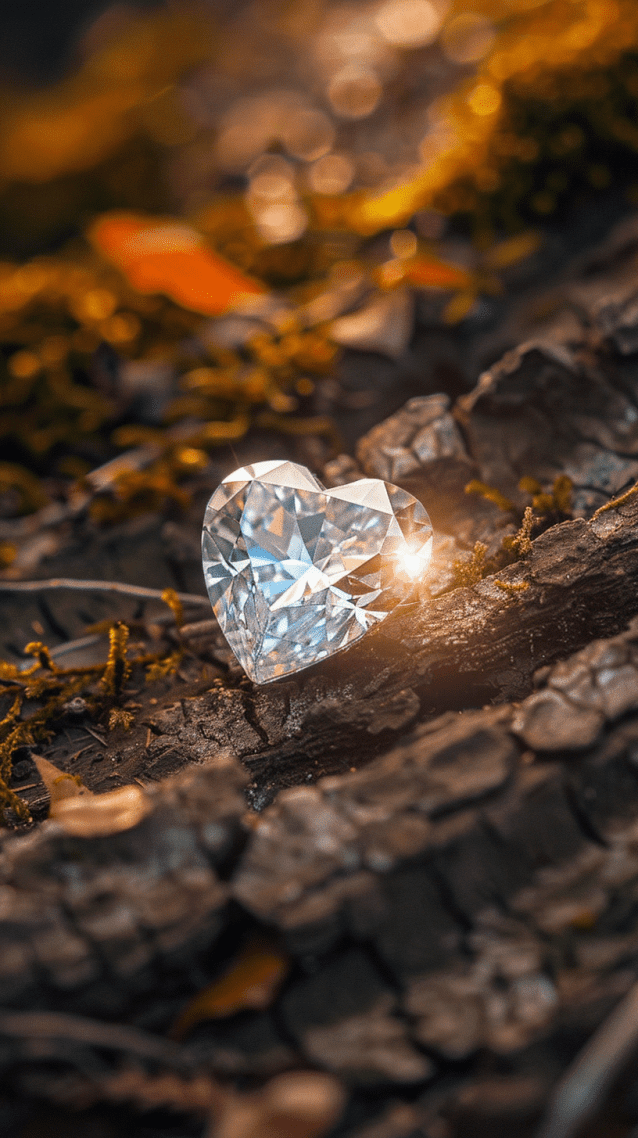
The Clarity of a Diamond
Diamond Clarity: The Beauty of Imperfection
Diamond clarity measures the presence of natural inclusions or blemishes within or on the surface of a stone. These internal characteristics, formed during the diamond’s creation, are part of what makes each gem one of a kind. The fewer the inclusions, the higher the clarity grade — and the greater the diamond’s value.
While inclusions may sound undesirable, most are microscopic and have little to no effect on a diamond’s beauty to the naked eye. Only under magnification can trained gemologists detect these tiny imperfections, which are used to determine the diamond’s clarity grade.
The clarity scale ranges from Flawless (FL) to Included (I3):
- FL (Flawless): Completely free of inclusions and blemishes
- IF (Internally Flawless): No internal inclusions, only minor surface marks
- VVS1–VVS2 (Very Very Slightly Included): Inclusions are extremely difficult to see under 10x magnification
- VS1–VS2 (Very Slightly Included): Inclusions are visible only with effort under magnification
- SI1–SI2 (Slightly Included): Inclusions may be noticeable under magnification and sometimes to the naked eye
- I1–I3 (Included): Flaws are visible without magnification and may affect brilliance
The closer a diamond is to Flawless, the rarer and more valuable it becomes. However, even diamonds with moderate inclusions can appear stunning when expertly cut — proving that true beauty often lies beyond perfection.
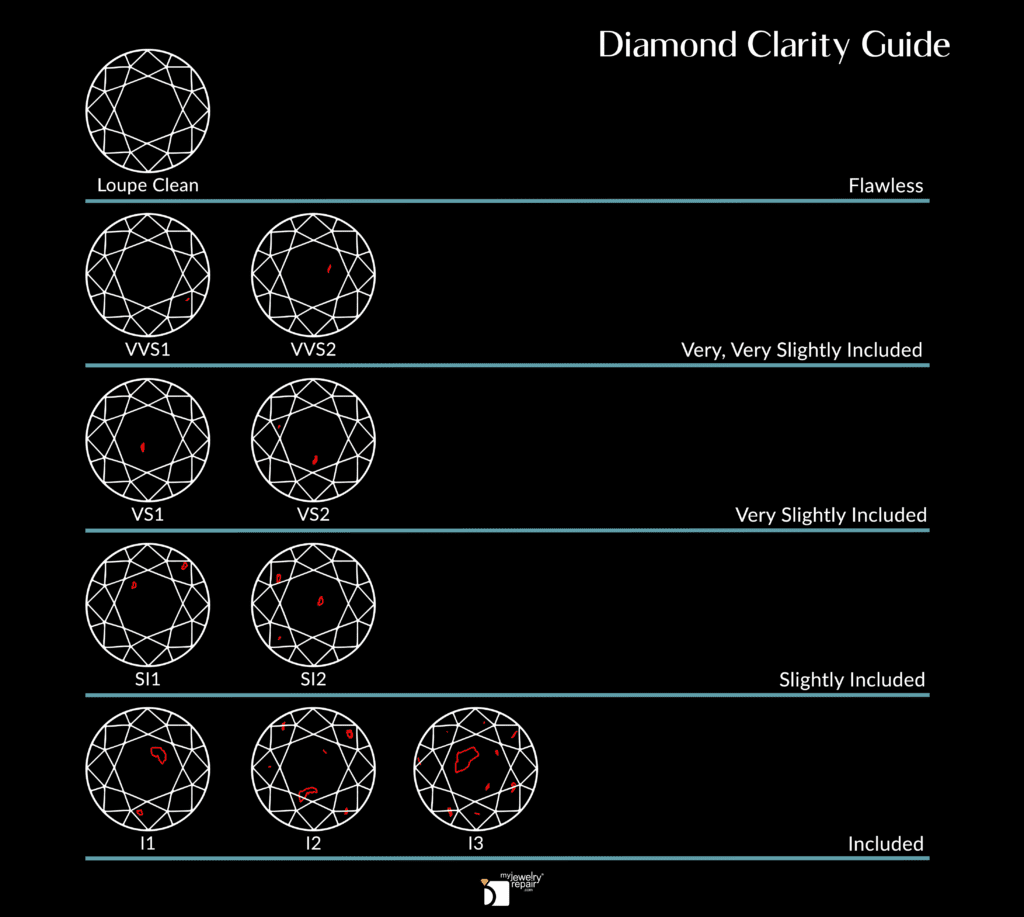
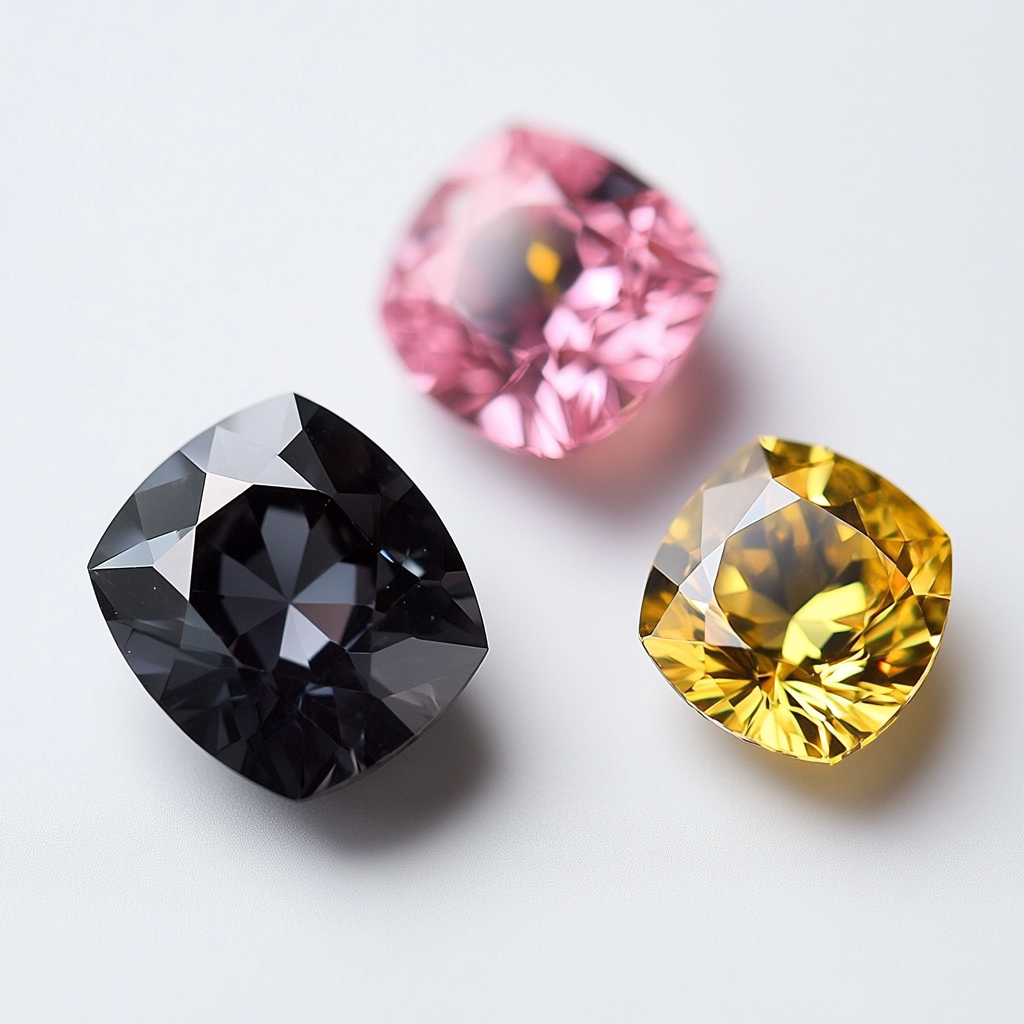
The Carat of a Diamond
Diamond Carat: The Measure of Weight and Rarity
Carat refers to a diamond’s weight, not its physical size, and is one of the most recognized factors in determining value. One carat equals 0.2 grams, or roughly the weight of a single paperclip. While a larger carat weight often makes a diamond appear more impressive, it’s important to remember that cut quality and proportions play a major role in how big and brilliant the stone actually looks.
Diamond prices increase exponentially with carat weight, as larger stones are much rarer and more difficult to find. For example, two half-carat diamonds may together weigh the same as one one-carat diamond, but the single one-carat stone will be significantly more valuable due to its rarity and continuous size.
Because of their balance between beauty and affordability, diamonds in the 0.50 to 0.75 carat range are among the most popular choices. The key is to find the perfect harmony between size, brilliance, and budget — ensuring your diamond captures both your style and your story.

The Color of a Diamond
Diamond Color: The Spectrum of Brilliance
Diamond color refers to the natural tint present within a stone, ranging from completely colorless to warm yellow or brown tones. The less color a diamond has, the higher its value, as colorless stones allow the most light to pass through and reflect pure brilliance. However, even subtle variations in color can influence a diamond’s overall beauty and price.
The GIA Color Scale begins with the letter D to represent complete colorlessness, a “fresh start” created to eliminate confusion from older grading systems. Most color distinctions are so slight that they are invisible to the untrained eye, yet they play a major role in diamond grading and pricing.
The standard color grading scale is as follows:
- D–F (Colorless): Exceptional rarity and pure white brilliance
- G–J (Near Colorless): Slight warmth visible only under magnification
- K–M (Slightly Tinted): Subtle hints of color, often masked by certain settings
- N–R (Very Light Yellow): Noticeable color tint
- S–Z (Light Yellow or Brown): Deeper warmth visible to the naked eye

Beyond traditional white diamonds are Fancy Color Diamonds, which occur in a spectrum of rare hues such as pink, blue, yellow, green, and even black. These vibrant stones are celebrated for their individuality and uniqueness, with famous examples like the Hope Diamond and Pink Star standing as symbols of nature’s most extraordinary artistry.

The Certification of a Diamond
The Fifth C: Diamond Certification
Beyond the traditional Four Cs of Cut, Clarity, Carat, and Color, there is a fifth factor that plays a crucial role in determining a diamond’s true value — Certification. A diamond certificate, also known as a grading report, provides verified documentation of the stone’s quality, authenticity, and unique characteristics.
Reputable institutions such as the Gemological Institute of America (GIA) and the American Gem Society (AGS) conduct detailed evaluations using precise instruments and strict grading standards. These reports include key information about a diamond’s cut, color, clarity, carat weight, and proportions, as well as any identifying inscriptions or security features.
Owning a certified diamond not only ensures transparency and confidence in your purchase but also serves as proof of value and ownership. Whether you’re buying a new piece or having one restored, certification provides peace of mind that your diamond’s beauty and brilliance have been recognized by the industry’s most trusted experts.
Natural vs. Lab-Created Diamonds
Types of Diamonds: Natural, Lab-Grown, and Fancy Colors
Natural Diamonds
Natural diamonds are formed deep within the Earth over billions of years, created when pure carbon is exposed to extreme heat and pressure. Their journey from the Earth’s core to the surface makes them one of nature’s rarest and most treasured creations. Each natural diamond is completely unique, containing tiny inclusions or growth patterns that serve as its fingerprint — proof of its natural origin and ancient history. Because of their rarity, authenticity, and emotional value, natural diamonds have long been considered the ultimate symbol of luxury, commitment, and prestige.
Lab-Grown Diamonds
In recent years, lab-grown diamonds have become a popular and respected alternative within the jewelry industry. Also known as lab-created or man-made diamonds, these stones are grown in controlled laboratory environments using advanced technology that replicates the same conditions under which natural diamonds form. The result is a diamond that is chemically, physically, and optically identical to one mined from the Earth.
Lab-grown diamonds offer several advantages beyond their ethical and environmental appeal:
- More Affordable: They typically cost 30–40% less than natural diamonds of the same size and quality.
- More Sustainable: Created without traditional mining, making them an eco-conscious option.
- Just as Durable: With the same hardness and brilliance as natural diamonds, they are equally suited for lifelong wear.
Although lab-grown diamonds have transformed the market with their accessibility and sustainability, natural diamonds remain the most desired choice for many buyers due to their rarity, heritage, and timeless allure.
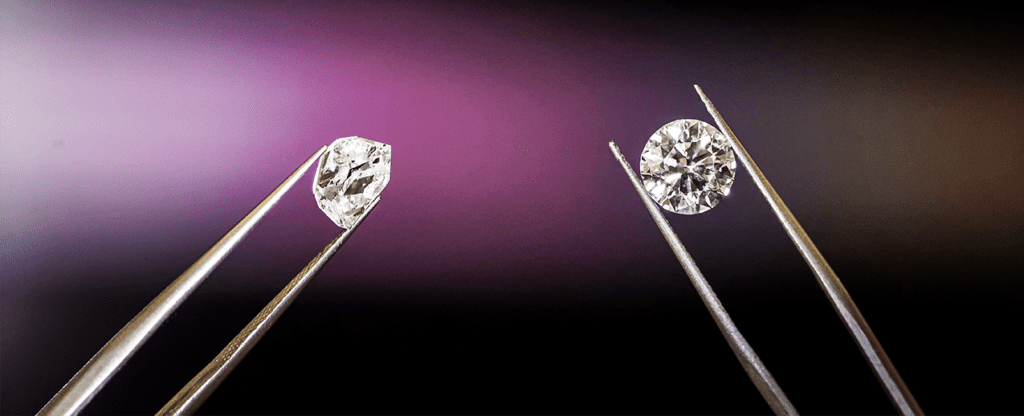
Fancy Color Diamonds
While most diamonds are white or near-colorless, some display striking natural hues such as pink, blue, yellow, green, or even black. These fancy color diamonds are incredibly rare, and their value is determined by the intensity and purity of their color. From the legendary Hope Diamond’s deep blue tones to the vivid pinks of the Pink Star, these remarkable gems are prized for their individuality and the captivating way they capture light in every shade.
For more information regarding Natural Diamonds vs. Lab-Created Diamonds, please check out Is There a Difference Between Natural and Laboratory-Grown Diamonds?
Diamond Certification, Ethics, and Value
Understanding a diamond’s origin, authenticity, and long-term worth is just as important as admiring its brilliance. Every diamond tells a story — from how it was sourced, to how it was graded, to how it retains its value over time. Whether you’re purchasing, restoring, or investing, these factors ensure that your diamond holds not only beauty but also integrity and lasting significance.
Diamond Grading and Certification
A diamond’s quality is verified through a professional grading report, often referred to as a diamond certificate. These reports provide an unbiased analysis of a diamond’s cut, clarity, color, and carat weight, along with detailed measurements and identifying characteristics.
The most reputable organizations for grading include:
- GIA (Gemological Institute of America) – Recognized worldwide for its strict and consistent standards.
- AGS (American Gem Society) – Known for scientific precision and its cut-focused grading system.
- IGI (International Gemological Institute) and EGL (European Gemological Laboratory) – Also provide reliable reports, especially for international markets.
Learning how to read a diamond certificate is essential. Each report lists grading scales, proportions, and sometimes laser inscriptions on the girdle for verification. Always ensure that the grading lab is reputable, and confirm the report number directly on the lab’s official website.
Unfortunately, counterfeit or manipulated certificates do exist. To protect yourself, always purchase from trusted jewelers who can verify the authenticity of both the diamond and its grading documentation.
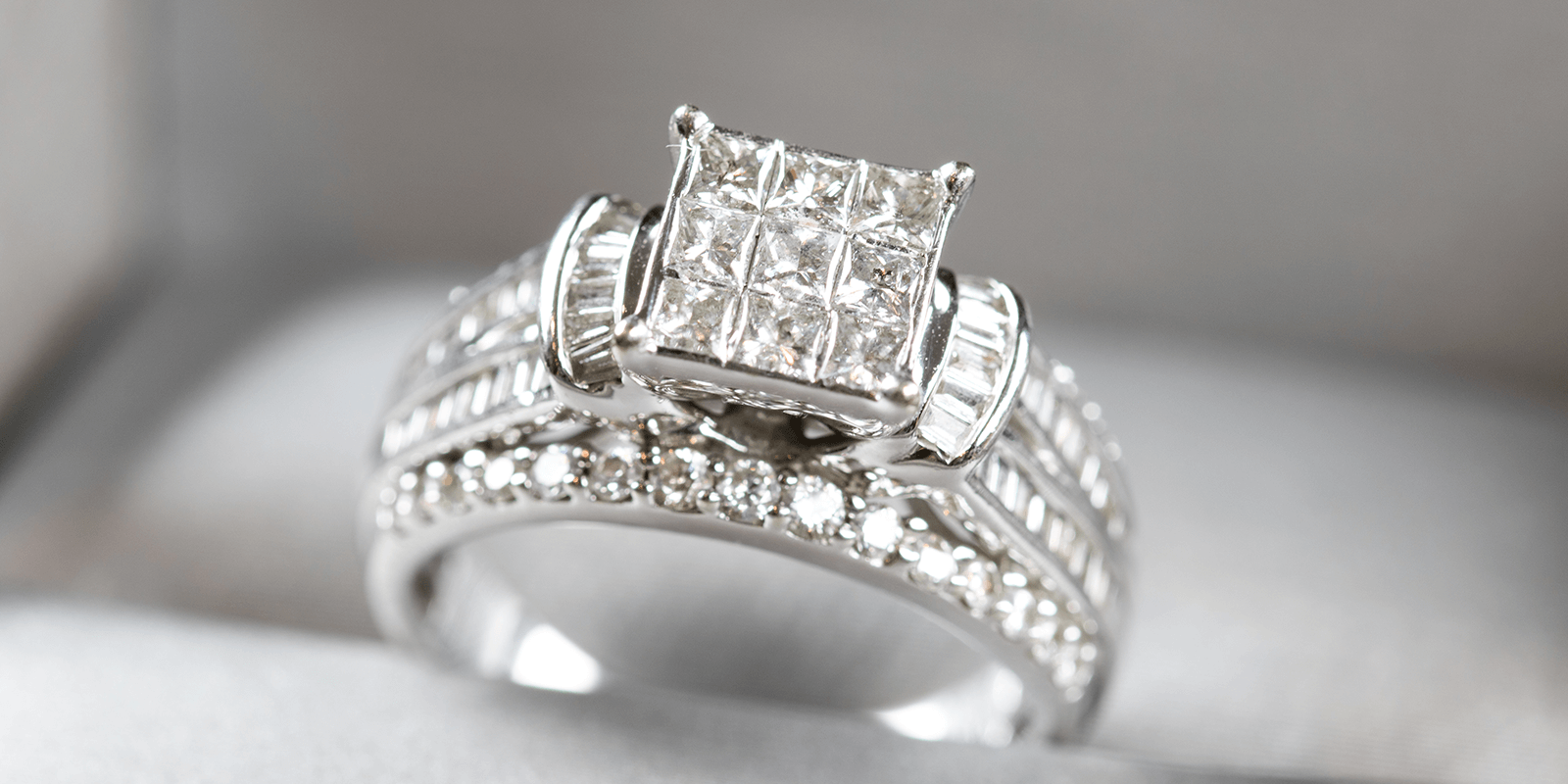
Ethical and Sustainable Diamond Sourcing
In today’s world, transparency and responsible sourcing are just as important as craftsmanship. Many buyers now seek conflict-free diamonds, mined and sold in accordance with the Kimberley Process Certification Scheme, which helps prevent the trade of diamonds that finance conflict or human rights abuses. For those who value sustainability, lab-grown diamonds provide an eco-conscious alternative with the same physical and optical properties as natural stones, offering both ethical assurance and lasting brilliance.
At My Jewelry Repair, we are dedicated to ethical craftsmanship and partner only with trusted suppliers who uphold integrity, transparency, and respect for both people and the planet. Every repair, replacement, and restoration reflects our belief that beauty and responsibility should always go hand in hand.
Diamond Investment and Long-Term Value
While diamonds are often purchased for their emotional and aesthetic significance, they can also serve as valuable long-term assets. However, their investment potential depends on several key factors:
- Cut and Clarity: A well-cut, high-clarity diamond maximizes brilliance and desirability.
- Color and Rarity: Colorless or rare fancy-colored diamonds (such as pinks or blues) often appreciate in value.
- Certification: Diamonds accompanied by recognized grading reports retain higher resale confidence.
When considering diamonds as investments, it’s wise to focus on quality over sheer size. Rarity, craftsmanship, and proper certification contribute far more to long-term worth than carat weight alone. Regular professional maintenance and secure documentation will also help preserve both physical and financial value.
Whether chosen for love, legacy, or investment, a diamond’s true worth shines brightest when it’s backed by authenticity, ethical sourcing, and expert care — qualities that ensure it remains timeless for generations to come.

Historical Diamonds Around the World
From ancient treasures to modern marvels, diamonds have fascinated humankind for centuries — symbols of power, prestige, and timeless beauty. Formed under extraordinary heat and pressure deep within the Earth, these gemstones have come to represent not only wealth and status but also eternal love and mystery. Over time, several exceptional diamonds have captured the world’s imagination with their immense size, rarity, and even tales of misfortune.
The Cullinan Diamond
Discovered in 1905, the Cullinan Diamond remains the largest gem-quality diamond ever found, weighing an astounding 3,106.75 carats in its rough form. It was later cut into nine major stones, several of which now adorn the British Crown Jewels. Valued at over $400 million, the Cullinan represents the pinnacle of natural rarity and historical significance.
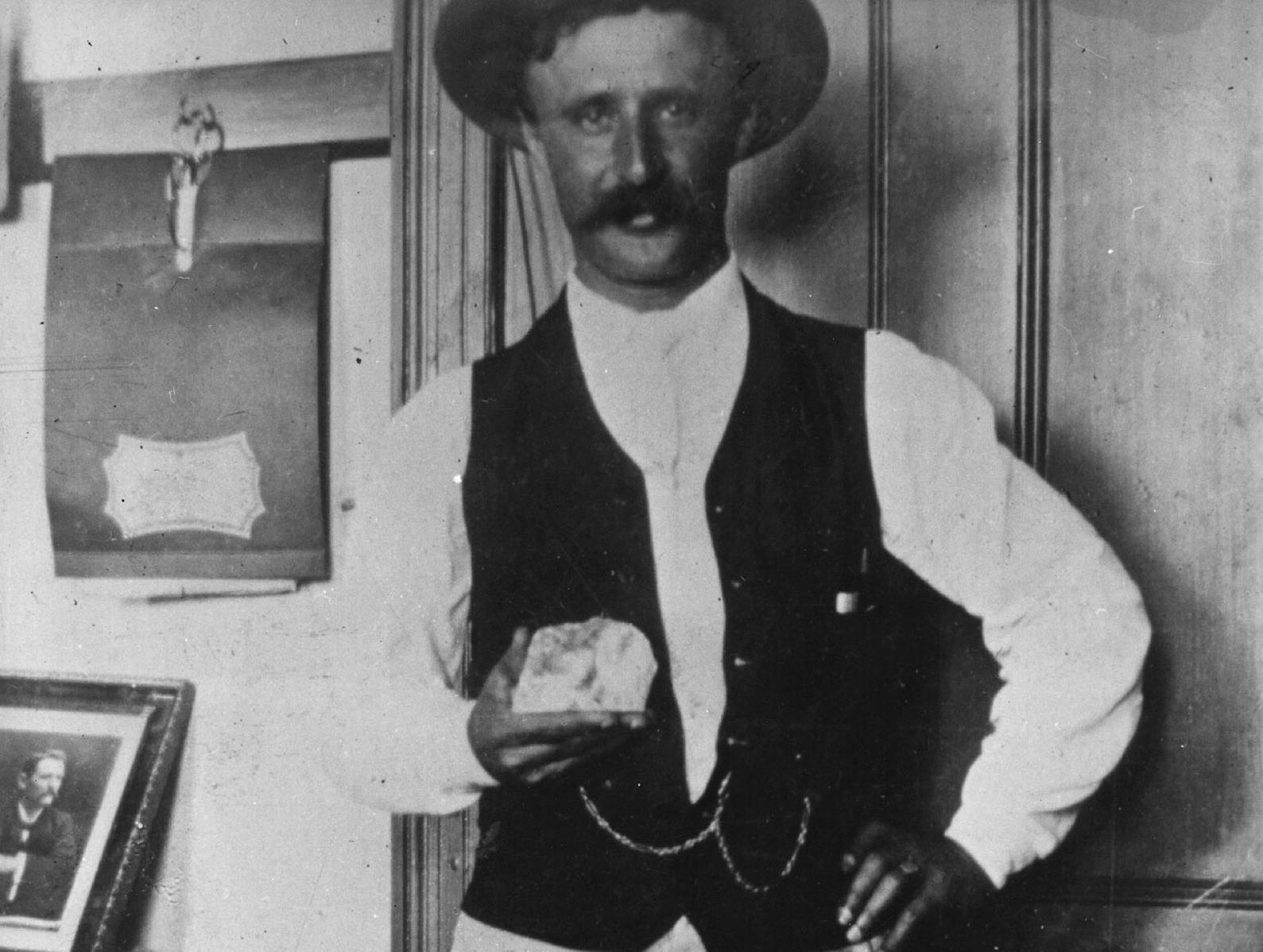
The Hope Diamond
Perhaps the most legendary of them all, the Hope Diamond is a mesmerizing 45.52-carat deep blue gem surrounded by centuries of intrigue. Once owned by European royalty, it is said to be cursed, bringing misfortune to many who possessed it. Despite the tales of bad luck, it remains one of the most admired diamonds in the world, now safely housed at the Smithsonian Institution.
The Black Orlov Diamond
Also known as the “Eye of Brahma,” the Black Orlov Diamond is a 67.50-carat cushion-cut gem surrounded by mystery and superstition. Legend claims it was once part of a Hindu idol before being stolen, leading to its rumored curse. Today, it stands as one of the largest black diamonds in existence and a striking example of how myth and beauty intertwine in gemstone history.
The Koh-i-Noor Diamond
With a history stretching back over 700 years, the Koh-i-Noor Diamond is one of the most famous and controversial gems ever discovered. Currently part of the British Crown Jewels, its ownership has long been a subject of debate among nations, reflecting its powerful cultural and political legacy.
The Enigma (HEX.com) Diamond
Among modern marvels, the Enigma Diamond, formerly known as The Enigma, stands apart. This 555.55-carat black diamond — believed by experts to have originated in outer space — was auctioned by Sotheby’s Dubai in 2022 and purchased by Richard Heart, who renamed it after his cryptocurrency brand, HEX.com. Its cosmic origin and geometric 55-sided cut make it one of the most extraordinary diamonds ever discovered.
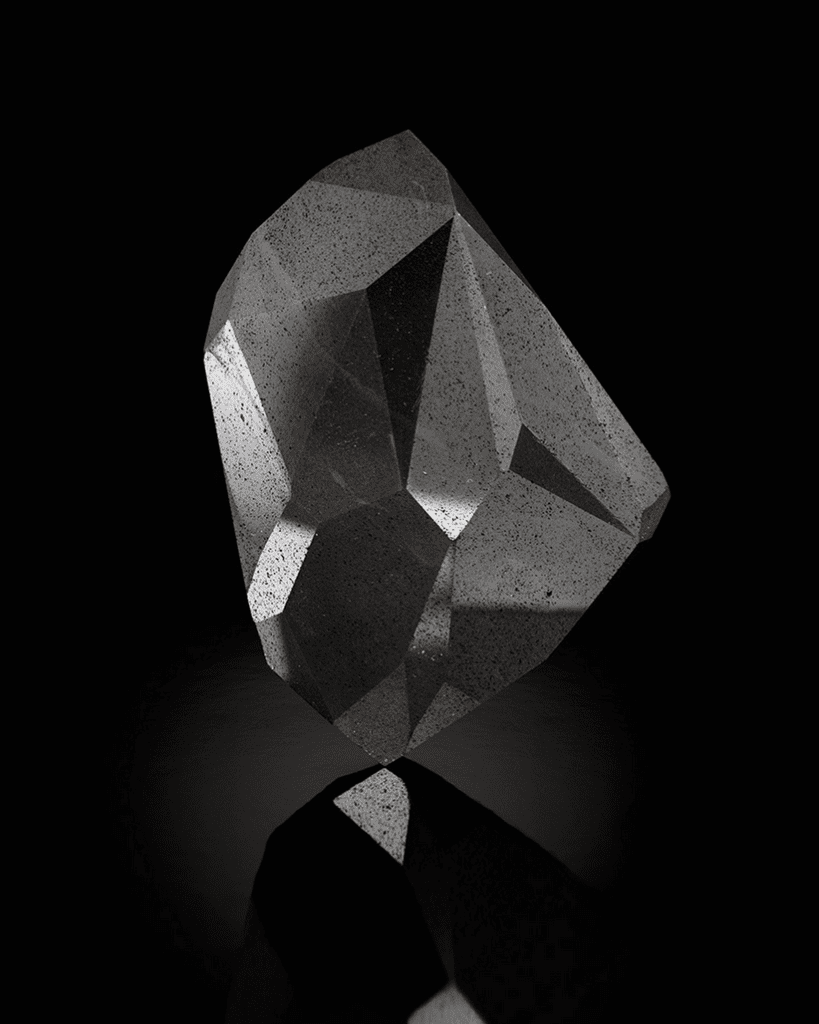
The Tiffany Diamond
The Tiffany Diamond, weighing 128.54 carats, is one of the world’s largest and most celebrated yellow diamonds. Its vibrant color and exceptional brilliance have made it an icon of glamour, famously worn by Audrey Hepburn and Beyoncé, and symbolizing timeless elegance under the Tiffany & Co. name.
The History Behind the Diamond Engagement Ring
While ancient cultures treasured diamonds for their symbolism, their association with love and commitment began in 1477 when Archduke Maximilian of Austria presented a diamond ring to Mary of Burgundy — the first recorded diamond engagement ring in history. Centuries later, the famous “A Diamond is Forever” campaign by De Beers cemented the diamond’s place as the ultimate expression of eternal love.
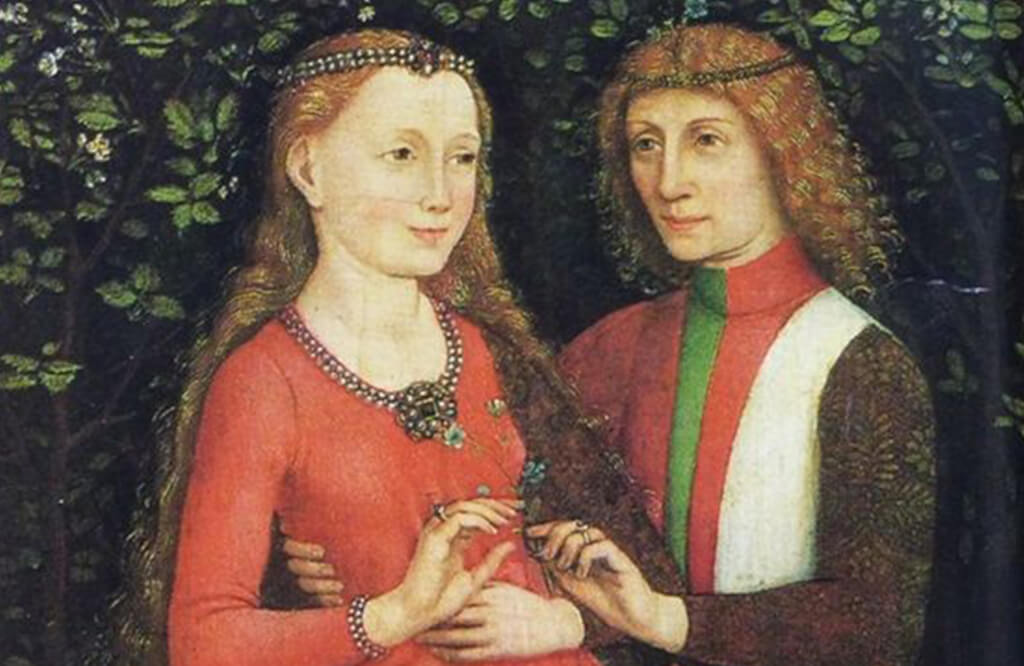
Diamond Myths & Misconceptions
Throughout history, diamonds have inspired not only admiration but also a fair share of myths. Here are some of the most common — and the truths behind them:
- “Lab Diamonds Aren’t Real Diamonds.”
- False. Lab-grown diamonds share the same chemical composition, structure, and sparkle as mined diamonds. The only difference lies in their origin.
- “Bigger Is Always Better.”
- Not necessarily. Cut and clarity often play a more significant role in a diamond’s beauty than its size alone.
- “Diamonds Are Unbreakable.”
- While diamonds are the hardest natural material on Earth, they can still chip or fracture if struck in the right place. Proper care and professional inspections help ensure their longevity and brilliance.
From royal crowns to engagement rings and even outer space, the story of diamonds continues to evolve — blending science, history, and legend into one enduring symbol of brilliance.
Picking the Perfect Diamond for Your Jewelry
Diamond Jewelry Styles: Choosing the Perfect Setting for Your Sparkle
Diamonds come in countless shapes, sizes, and styles, making them one of the most versatile gemstones in the world of fine jewelry. When selecting the perfect diamond, it’s important to consider not only the stone’s cut and quality but also how it will complement your chosen setting, metal type, and overall design. Think about the piece you’re creating — whether it’s a ring, necklace, bracelet, or pair of earrings — and how each detail will influence its final appearance and brilliance.
For engagement rings and wedding bands, diamonds remain the ultimate symbol of love and commitment. From timeless solitaires to intricate halo or vintage-inspired designs, each setting highlights a diamond’s beauty in a unique way. Diamond earrings, whether classic studs, modern hoops, or graceful drops, bring effortless elegance to any look. Necklaces, pendants, and bracelets can range from delicate, understated pieces to bold statement designs like the iconic tennis bracelet. And for those who appreciate precision as much as beauty, diamond-accented watches offer the perfect fusion of artistry and craftsmanship.
No matter the piece, the goal is harmony — the perfect balance between sparkle, design, and personal expression. With the right diamond and setting, your jewelry can become a reflection of your story, meant to shine for generations.

Diamond Care and Maintenance: Keeping Your Sparkle Alive
Even though diamonds are the hardest natural material on Earth, they still need proper care to maintain their brilliance. Over time, oils from your skin, dust, and everyday residue can dull a diamond’s sparkle by clinging to its surface. In fact, even a small amount of grease or lotion can create a film that prevents light from reflecting as beautifully as it should. Fortunately, with a few simple steps and regular maintenance, you can keep your diamonds looking as radiant as the day they were set.
Everyday Cleaning at Home
To preserve your diamond’s brilliance, clean your jewelry once or twice a week using a mild degreasing solution — warm water with a few drops of dish soap works perfectly. Soak your piece for 15 to 20 minutes, then gently scrub it with a soft toothbrush, especially beneath the stone where dirt tends to build up. Rinse thoroughly with clean water (and be sure to close the drain if cleaning over a sink), then pat dry with a lint-free soft cloth to restore its shine.
What to Avoid
Steer clear of harsh chemicals, toothpaste, or abrasive cleaners, as these can damage metal settings or wear down the finish. Likewise, ultrasonic home cleaners should only be used with caution, as vibrations may loosen stones in delicate or vintage pieces.

Professional Cleaning and Inspection
Even with consistent at-home care, it’s important to have your diamond jewelry professionally cleaned, polished, and inspected every six months. This ensures that your settings remain secure and your gemstones retain their full brilliance. A trained jeweler can also check for signs of wear or loosened prongs before they become issues.
At My Jewelry Repair, we specialize in professional diamond cleaning, polishing, and restoration, all performed by experienced craftsmen in state-of-the-art facilities. Whether it’s your engagement ring, an heirloom pendant, or a treasured bracelet, our experts ensure every diamond continues to shine brilliantly for generations to come.
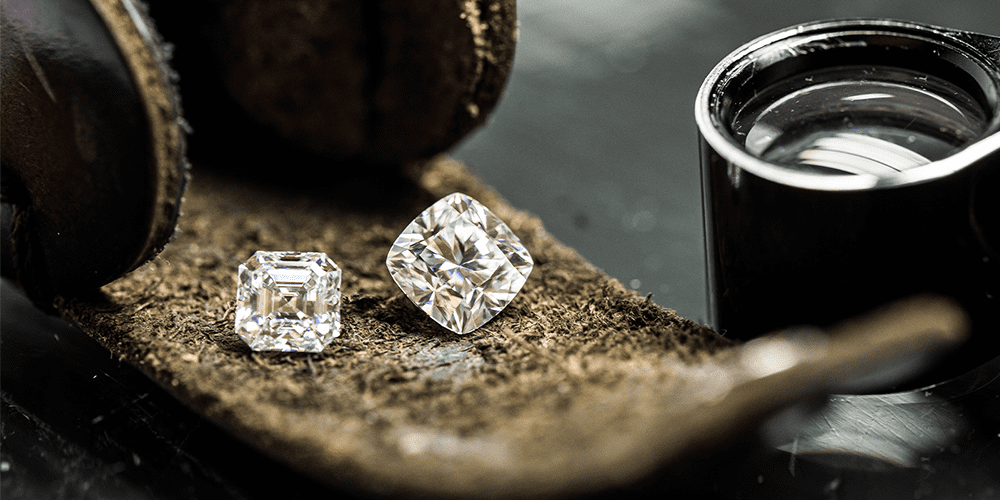

From the Earth’s Core to Your Jewelry Box
My Jewelry Repair Can Keep It Sparkling
Just as each diamond’s brilliance is brought to life through precision and care, your treasured pieces deserve the same expert attention. At My Jewelry Repair, our Master Jewelers specialize in restoring the beauty and brilliance of every gemstone, from replacing lost diamonds to polishing heirloom rings until they shine like new.
Whether it’s securing a loose stone, resizing your favorite ring, or providing a professional clean and polish, our team combines artistry with advanced technology to ensure every facet sparkles perfectly. With nationwide mail-in service and state-of-the-art facilities, we make it easy to keep your diamonds shining for generations to come.
We have a variety of options in our catalog of diamond services including:
Resources and Media:
- ¹Diamond Precious Stone Lab-Grown by GrownDiamond on Pixabay: https://pixabay.com/
- ³Frederick Wells holding the Cullinan Diamond circa 1905 via Wikimedia Commons: https://commons.wikimedia.org/
- ³55-sided, 555-carat ‘Enigma’ black diamond by LiveScience: https://www.livescience.com/
- ⁴Painting of Archduke Maximilian of Austria and Mary of Burgundy: https://hemmahoshilde.wordpress.com/
Have Questions?
Clean & Polish Services
“A basic clean, polish, and inspection is part of the routine care and maintenance needed to keep your jewelry looking like new. The inspection process includes looking for loose stones, bent prongs, and any damage to the metal or stones that need to be repaired.”
Stone Setting Repair
“A stone setting repair can be a simple re-tipping of a worn prong (which is considered routine care and maintenance) or the complete rebuilding/replacing of a damaged prong. In the case of severe damage, the entire head of the ring may need to be replaced.
Regardless of whether or not the prongs are compromised due to normal wear and tear or a result of accidental damage, we can provide the routine care and maintenance in order to ensure you do not lose a stone in your setting.”
Diamond Replacement Services
“The process of a Diamond Replacement is simple enough, yet requires trained eyes to be able to make a flawless switch. We aim to leave no trace of our work, which means not only will your setting be perfected, but the diamond we choose will complete your jewelry piece effortlessly.”
Diamond Ring Repair Services
“Our Diamond Ring Repair service begins by evaluating your item. In the case of a missing diamond(s), we search for a perfect match to replace the missing gem(s). If your diamond ring simply needs a clean and polish, we will provide the necessary service.
In the case your diamond ring has more extensive damage, we are prepared to cover all of your ring repair needs from ring resizing, all the way to soldering your ring back together.”
Invisible Setting Repairs
“A centuries-old, originally French technique, invisible set gemstone jewelry (aka the Invisible Setting), is one of the most beautiful setting types available. It involves the process of setting stones side-by-side, hiding the metalwork underneath, which can give the appearance of a larger stone. This technique creates an uninterrupted flow in the gemstones, thus producing the coveted “Invisible Setting”.
We hand-select master jewelers who not only know how to perform an invisible setting repair but are specialists in the art of this technique. Your special accessory will be placed in the hands of a professional who appreciates the difficult process of making your invisibly set jewelry as perfect as possible.”
The Glue Method is not a practice we subscribe to at My Jewelry Repair.
Diamond Gemstone Services
“The most trusted way to identify if your diamond is real or not is to have it inspected directly by an experienced jeweler. My Jewelry Repair happens to have Master Jewelers, who have long-term experience with diamonds, as well as the equipment needed to work with these gemstones.
Depending on where you purchase your diamond, individual companies may provide a Diamond Certification that confirms the quality of diamond, accurate information on its grade, and ownership verification. This also can be referred to as the 5th C when evaluating diamonds.”
Interested in Our Diamond Services?
Our team has gemologists certified by

We are proud members of the


